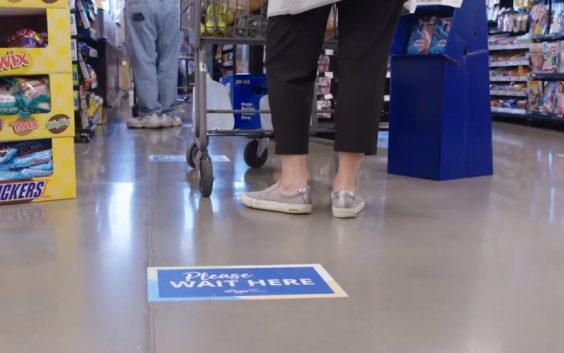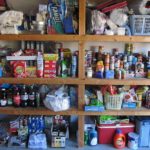
Are you once again going to the grocery store as often as you were before the coronavirus pandemic? Or are you still trying to avoid it, and going grocery shopping as little as possible?
It could depend where you live.
With certain parts of the country less hard-hit by the virus than others, and certain grocery chains doing better about ensuring shopper safety than others, some Americans are getting back to their regular grocery shopping routines more swiftly than residents of other regions are.
A look at Google’s latest COVID-19 Community Mobility Report shows how often people are heading to the grocery store these days, and whether it’s more or less often than they did before the pandemic. Google uses mobile data from users who have enabled their location history in their Google Account, to determine precisely where they’re going. One category Google has chosen to track in its regular reports, is grocery store and pharmacy visits.
And residents of South Dakota and Wyoming appear to have their refrigerators and pantries pretty well-stocked these days. The most recent report, incorporating data gathered through the end of last week, shows 26% more grocery trips in both states than the baseline, which is the median value from the five‑week period from January 3rd to February 6th, back when things were “normal.”
Both states have among the fewest number of reported COVID-19 cases in the country, according to the CDC. So it stands to reason that shoppers there are less concerned about going about their normal business, as lockdown restrictions ease. In Montana, in particular, the percentage of grocery visits hasn’t dipped below the baseline at all over the past six weeks, which means shoppers there have been going grocery shopping even more often lately than they did before the pandemic.
Shoppers there may or may not be taking the safety of their stores into consideration. Walmart, Albertsons and Kroger are among the most popular big grocery chains in Wyoming, while Walmart and Hy-Vee are dominant in South Dakota. Walmart and Hy-Vee scored highly in a recent survey of which grocery chains are doing the best job keeping their stores clean and their customers safe. Kroger finished in the middle of the pack, while Albertsons scored near the bottom in another survey, by the consumer market research company Magid.
Other states that have seen a significant uptick in the number of grocery visits are also less-populated states with relatively few coronavirus cases – Iowa, Montana, Alaska, Idaho and Utah all experienced double-digit percentage increases over their pre-pandemic grocery shopping levels.
In other places, life is not quite so normal, at least when it comes to grocery shopping. And the state that has seen the biggest decline in grocery trips is not where you might think –
Hawaii. The Aloha State is second only to Montana in having the fewest reported cases of COVID-19 in the country. And yet shoppers there are making 20% fewer grocery shopping trips than they were before the pandemic. Hawaii’s most popular grocery chains are Safeway and the local chain Foodland. And apparently most Hawaiians – or, perhaps, tourists who aren’t visiting Hawaii at the moment – aren’t visiting either of them.
Other places seeing notable declines in grocery visits are the District of Columbia, Florida, Arizona, California and Massachusetts – all states where the number of COVID-19 cases are among the highest in the country (and, in the case of DC, where the number of cases per capita is among the highest.)
But whether you consider shoppers’ grocery routines to be normal in South Dakota and Wyoming, depends on your definition of “normal.” Grocery visits in New Jersey, Texas and Virginia are exactly 0% higher or lower than the baseline – they’re right back to where they were at the beginning of the year.
So consider all the weeks you spent rummaging around the pantry looking for something to eat while you avoided going grocery shopping, and then all the times you pushed your way through a crowded store filling up your shopping cart. In contrast, visiting the grocery store for a routine shopping trip, exactly as often as you did before the pandemic, sounds pretty nice – and just about as “normal” as you can get.
Image source: Kroger










